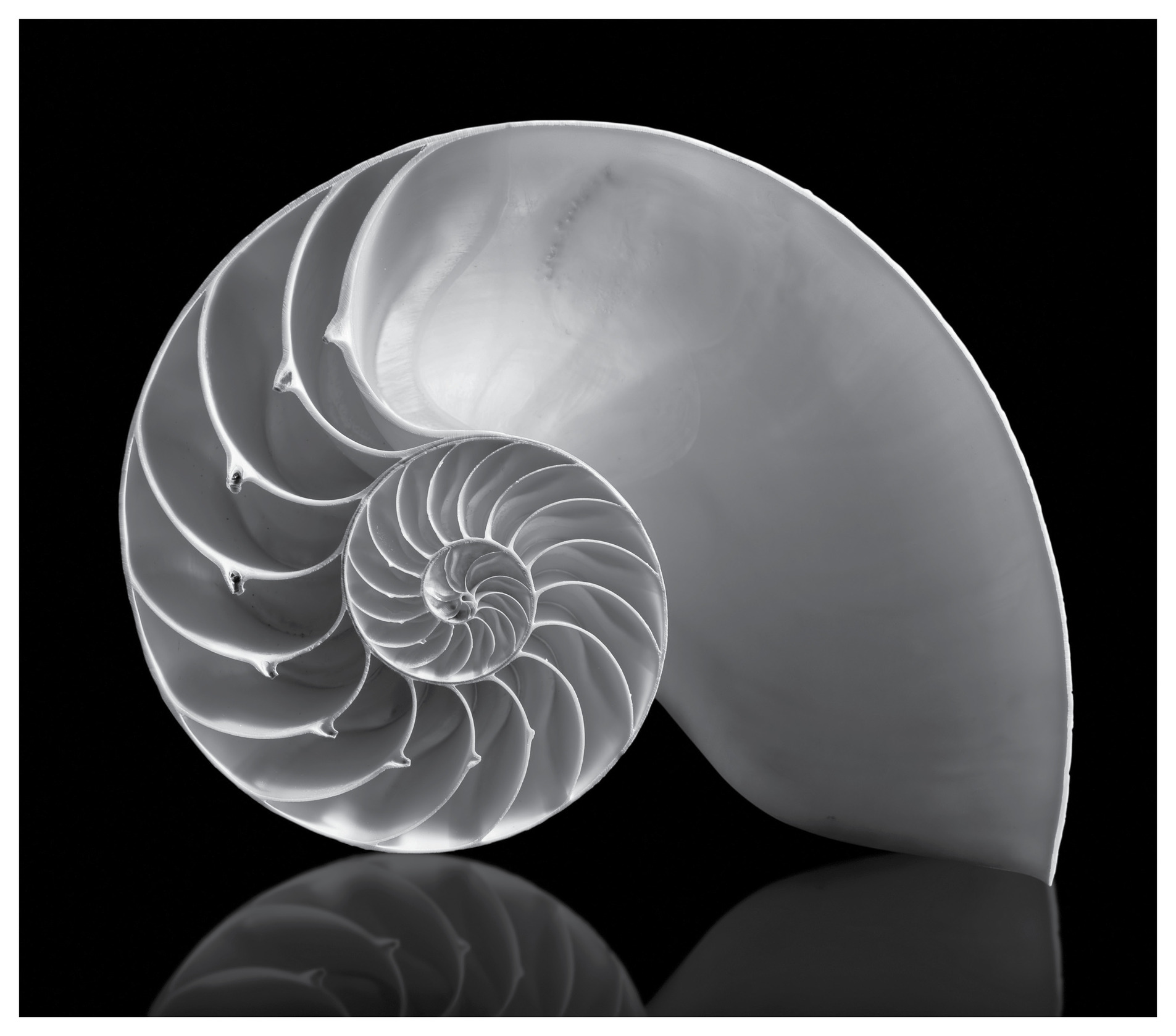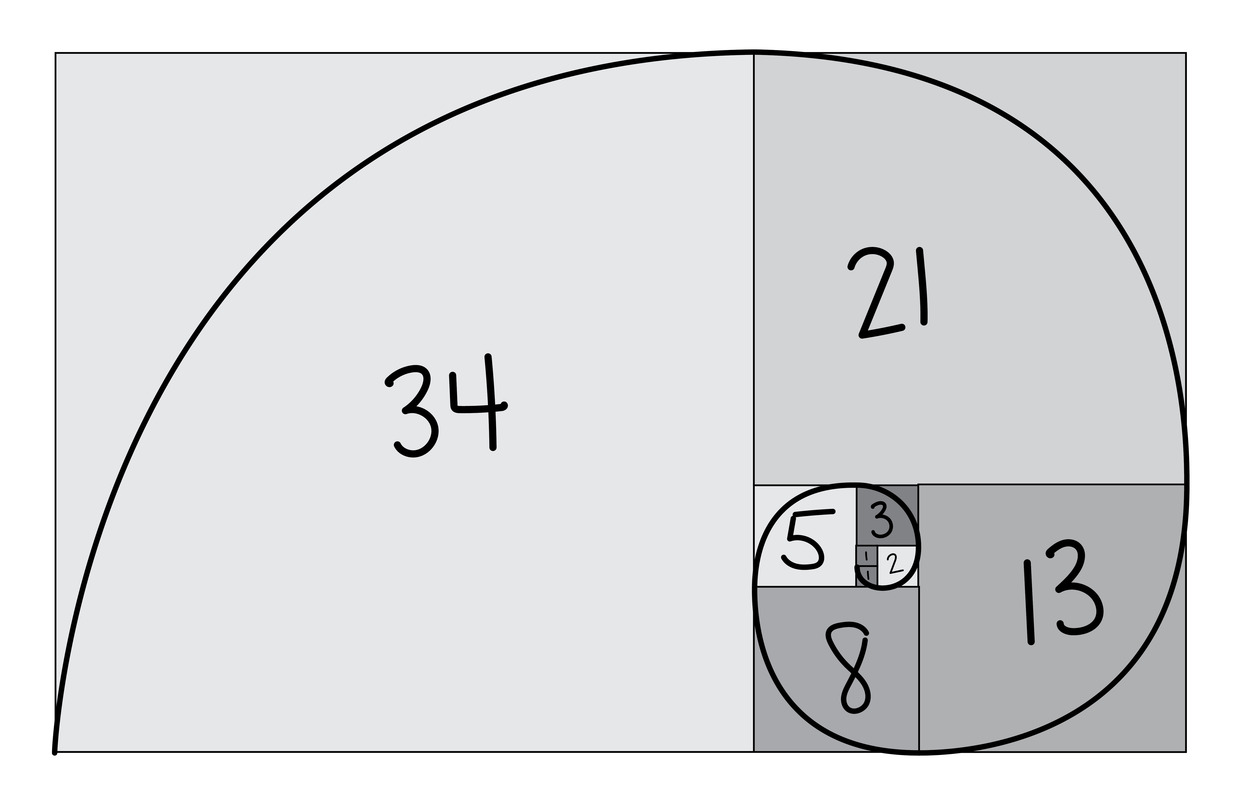
Lucy sees math all around her—and not just digits, though she loves those, too. The shapes that make our world can often be calculated. Lucy’s favorite example of this is the Fibonacci sequence, which can be graphed as an approximate spiral and found in nautilus seashells, seed patterns in a sunflower, the arrangement of petals in a rose, hurricanes, the bracts of a pinecone, and spiral galaxies. These are nature’s masterpieces, and Lucy hangs this art in her bedroom.

The Fibonacci sequence is a series of numbers that begins with 0 and 1 and where every number that follows is the sum of the 2 numbers before it.
0, 1
So the next number would be 0 + 1.
0, 1, 1
The next would be 1 + 1.
0, 1, 1, 2
Then 1 + 2. And it can go infinitely.
0, 1, 1, 2, 3, 5, 8, 13, 21, 34, 55, 89, 144, 233, 377, 610, 987, 1597, 2584, 4181, 6765, 10946, 17711, 28657, 46368, 75025, 121393, 196418, 317811, 514229, 832040, 1346269…
When the Fibonacci sequence is drawn as a set of blocks, these squares can be used to create an approximate spiral.

-
The day to celebrate Fibonacci is November 23. Get it? 11/23.
-
While Pi is a great name for a dog, Fibonacci might be a good name for a cat.